Sustainable straws have become a hot and cold corner of the sustainability movement. In 2018, it was estimated that disposable plastic straw consumption in the U.S. was up to 142 billion straws per year. During that same year, Seattle became the largest U.S. city to ban plastic straws, with a host of cities like New York and Miami following suit over the past few years. Now, a new market has emerged for alternative, sustainable, and reusable straws. With so many alternative straw options out there, we decided to sit down and try all of them in order to figure out which ones were worth the hype and the investment.
We judged a total of 11 straws in general categories — size, material, firmness, porosity, and how they felt when we sipped — with a specific emphasis on first impressions when we initially put them in our drinks, and revisiting each after leaving them in our drinks for two hours.
Here’s how they stacked up:
Don’t miss a drop!
Get the latest in beer, wine, and cocktail culture sent straight to your inbox.
#11: Corn Starch-Based, Compostable & Biodegradable Plastic
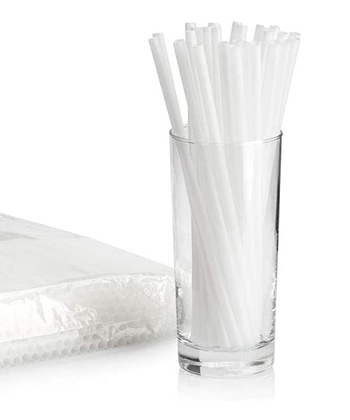
We had to put these corn starch-based “compostable, biodegradable plastic” straws on the bottom of the list for a couple of reasons: They felt like flimsy, low-grade, fast-food soda fountain straws with a strange texture. Their most redeeming quality was their durability, as they stayed intact throughout the full two hours like any other plastic straw would. We couldn’t help but wonder how these were any different from standard plastic straws and felt confused by the seemingly all-encompassing “compostable and biodegradable plastic” descriptor.
In a FAQ page about plastic recycling and composting, the U.S. Environmental Protection Agency clarifies that “plastic that is compostable is biodegradable, but not every plastic that is biodegradable is compostable.” It goes on to explain that “compostable” plastics are actually not meant for home composting unless the product is specifically labeled as such. Additionally, compostable plastics actually cannot be disposed into regular plastic recycling bins, as they “can contaminate and disrupt the recycling stream if intermixed with petroleum-based plastics that are non-compostable.” The EPA encourages you to to contact your local government or your garbage/recycling company to inquire about drop-off locations for your compostable plastic.
Upon learning this information, we took a second look at the listing for these straws and learned that they were not delegated to home composting. Suffice to say, we did not like these straws.
First impression: 2/5
Durability after two hours: 4/5
#10: Rice

We were the most excited to try out rice straws, which we had never heard of prior to this experiment. We were, without a doubt, blinded by incongruous intrigue going into this test and in reality were met with a sticky, rubbery mess. The material begins to break down the moment it touches a liquid, and from the very first sip, you’re left with a sticky residue on your lips. On top of that, after about three sips, I bit down lightly on my rice straw to test out the durability only to have it crack and completely crumble into my mouth, leaving the top sharp and jagged. I spit out the sticky rice crumbles and allowed the straw to rest in my drink for the allotted two hours to see how it would hold up. While the top half remained firm, the bottom half that was submerged had completely curved, expanded in size, and became slimy and rubbery. It was pretty gross.
First impression: 1/5
Durability after two hours: -5/5
#9: Pasta
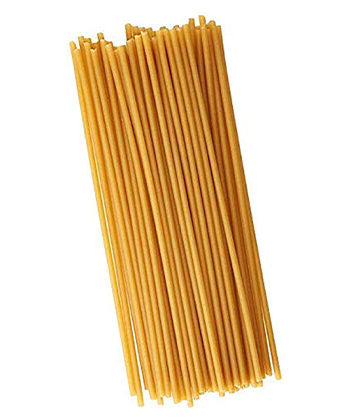
These self-proclaimed pasta straws were little more than glorified bucatini (no, really — the product description states that they are 100 percent edible and non-GMO) that offered a similar experience to that of the rice straws. Trying to bend or bite these straws will result in a snap identical to raw pasta. After two hours in a drink, they found a new life as strange, cold spaghetti.
First impression durability: .5/5
Durability after two hours: -5/5
#8: Reed
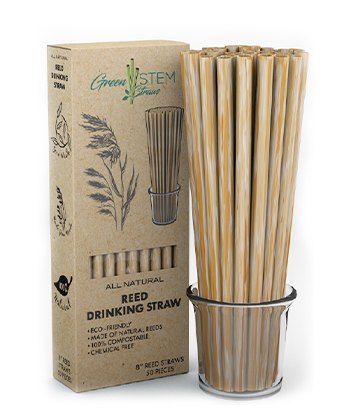
We were curious to see if these reed straws would be a strong competitor to the popular bamboo straws. They were not. We could tell right away that they were lower quality and made with a thinner material, as a good portion of the straws that came in the box arrived cracked. While they don’t become flimsy as time progresses, they split at the slightest bit of pressure, which creates a sizable safety hazard of accidentally consuming small bits or cutting your mouth, lips, or tongue.
First impression durability: 2/5
Durability after two hours: 3/5
#7: Paper
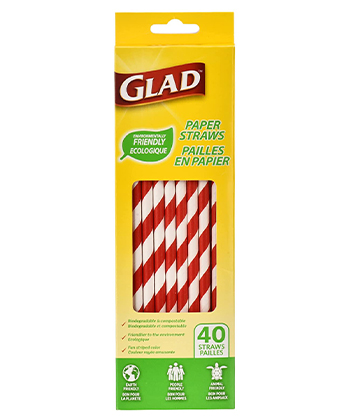
We were convinced that paper straws would be on the bottom of this list, as they’ve been a point of debate for many. These Glad Disposable Paper Straws were a pleasant surprise at first, and stood firm for most of the first hour before ultimately meeting their mushy, unpleasant fate. Maybe this is a small testament to some upgrades and changes to paper straws as they become more commonplace.
First impression durability: 3/5
Durability after two hours: 2/5
#6: Glass
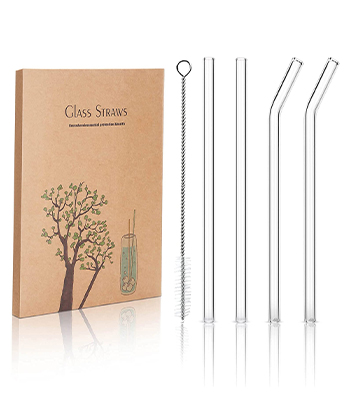
Glass straws are a viable option as we enter the realm of dishwasher-safe straws. I personally could never bring myself to purchase these on my own volition because I would always be thinking about the possibility of the glass breaking in my mouth, or even shattering in my bag if I were to take these on the go. Unsurprisingly, the product description for these glass straws did not provide much comfort, describing the craftsmanship of the glass as only being “not easy to wound.” Still, at the end of the day, they’re still on the higher end of the durability scale, can handle hot and cold drinks, and obviously won’t get flimsy inside your drink.
First impression durability: 3.5/5
Durability after two hours: 5/5
#5: Metal
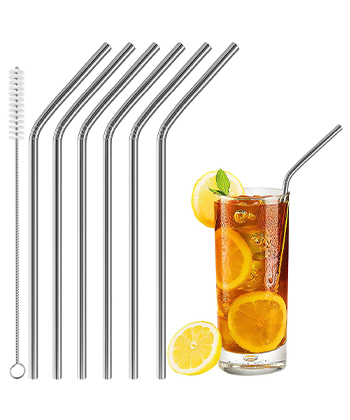
Metal straws make it to the top 5 over their glass counterparts primarily because you won’t have any lingering suspicion that the straw is going to break in your mouth. It is certainly the most durable sustainable straw; however, that durability makes them much more difficult to clean given the unmalleable shape, a downside that proved especially true with the curved metal straws we tried. Just be wary of using these when consuming a hot liquid like tea or coffee, as metal is a heat conductor that will absorb the heat from your hot drink, making the straw itself hot to the touch.
First impression durability: 5/5
Durability after 2 hours: 5/5
#4: Bamboo

The reusable bamboo straws from Public Goods held up far better than the reed straws, and are a commendable value at $4.95 for a 6-pack that comes with a cleaning brush. We were definitely apprehensive after nearly getting splinters from our last wood-based straw, but ended up happy with a thick material and sleek shape that didn’t wane over time while submerged in our drinks.
First impression durability: 4/5
Durability after two hours: 5/5
#3: Silicone
![]()
Silicone straws are our highest-ranked reusable straw because you get the best of both worlds: a malleable shape that can fit into any cup and bend for sipping, while still using a super-durable material that will have no problem hanging out in the water cup on your bedside table. They’re also a straw biter’s dream — no cracking, no mushiness, and no unknown materials that could be seeping into our drinks. After trying most of these other straws, we just loved that this straw didn’t pose an immediate question to our safety.
First impression durability: 4/5
Durability after two hours: 5/5
#2: Vegetable Fibers
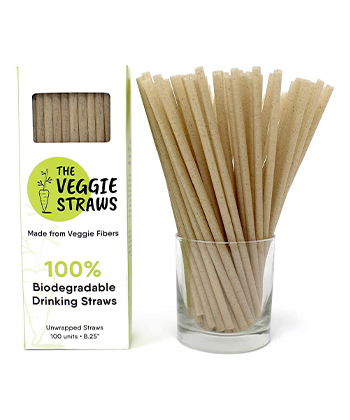
These vegetable fiber straws felt like normal plastic and would be a great alternative at bars and restaurants. The material was not affected after two hours in our drinks and didn’t have any strange textures. To us, the only reason why this didn’t make the No. 1 spot is because it’s not specified in the description exactly which vegetables are used to create this product, or how prominent those materials might be in the finished straw product, which could be a point of concern for anybody with allergies.
First impression durability: 5/5
Durability after two hours: 5/5
#1: Agave
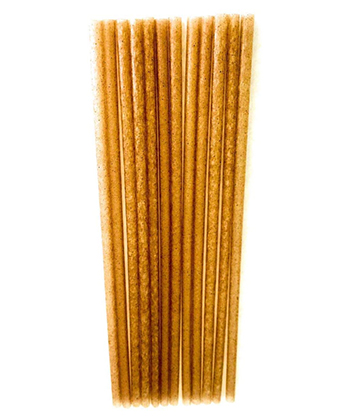
Our winner! We loved these agave fiber straws (maybe it has something to do with our affinity for tequila?). There were no issues with the material, feel, or durability. The product description even detailed what part of the agave plant is used (the stems leftover from the tequila process), and explained the production process. They are approved for home composts and also come in individual, recyclable rice paper wrappers, making them the ideal candidate for bars and restaurants.
First impression durability: 5/5
Durability after two hours: 5/5